by lauenc | Oct 7, 2024
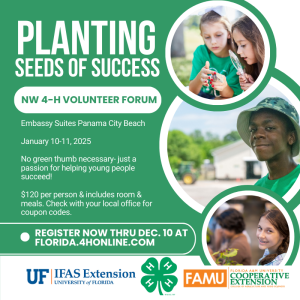 Dates: January 10-11, 2025
Dates: January 10-11, 2025
Location: Panama City Beach, FL
Are you excited about helping young people grow? Do you want to become a stronger leader and connect with others who share your passion? Then save the date for the Northwest 4-H Volunteer Forum in Panama City Beach! We’re looking forward to a weekend filled with learning, fun, and connection. This forum is a great chance for 4-H volunteers to gain new skills, share ideas, and make an even bigger impact on the youth we serve.
Volunteers are the heart of 4-H. You play a vital role in mentoring young people and helping them grow in projects like agriculture, science, health, and citizenship. Without your time and dedication, 4-H wouldn’t be able to fulfill its mission to empower and guide the next generation.
One of the best parts of attending the forum is the chance to network with fellow volunteers. Connecting with others who share your passion for 4-H opens the door to collaboration and learning from each other’s experiences. By building communities of practice, we strengthen our local programs and create lasting partnerships that help us serve youth more effectively. These connections can lead to new ideas, shared resources, and ongoing support from others who understand the challenges and rewards of volunteering.
At the forum, you’ll have the chance to attend workshops designed to strengthen leadership, build new programs, and provide helpful tips for mentoring youth. These sessions will be led by experienced 4-H Agents and volunteers who can’t wait to share their insights. You’ll leave with fresh ideas and skills to take back to your 4-H community, helping to make an even bigger difference.
Register today to be part of this exciting opportunity! Not only will you grow as a leader, but you’ll also contribute to the success of 4-H for years to come. Let’s work together to inspire the next generation of leaders and problem-solvers. Don’t miss out—come grow, connect, and lead with us!
Feel free to share this invitation with other volunteers or anyone interested in supporting 4-H. Let’s grow together!
Register in 4Honline now through December 10th.
by Marcus Boston Jr. | Mar 8, 2024
The form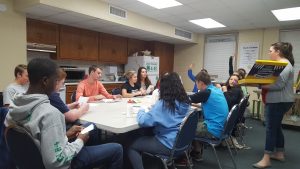 ulation of an effective camp counselor training program is crucial for ensuring a positive and enriching experience for both campers and counselors alike. The primary objective of any summer camp should be to recruit, train, and support competent counselors who can contribute to the overall enjoyment and success of the camp. Counselors play a pivotal role in shaping the camp experience, and their training is essential in achieving this goal.
ulation of an effective camp counselor training program is crucial for ensuring a positive and enriching experience for both campers and counselors alike. The primary objective of any summer camp should be to recruit, train, and support competent counselors who can contribute to the overall enjoyment and success of the camp. Counselors play a pivotal role in shaping the camp experience, and their training is essential in achieving this goal.
When designing a counselor training program, it is imperative to cater to various learning styles and preferences among participants. This includes accommodating visual, auditory, and kinesthetic learners by incorporating a diverse range of methods and activities into the training sessions.
Five key components of a successful 4-H camp counselor training program:
- Community Service: Initiating activities that allow counselors to engage in community service not only fosters a sense of social responsibility but also serves as an effective icebreaker, facilitating bonding among participants. (examples: gleaning citrus trees, sorting at food banks, assisting with clothing drives, etc.)
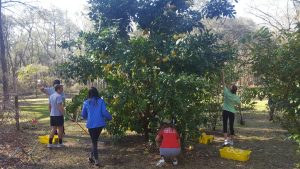
- Ice Breakers: Commencing each training session with ice breakers and team-building activities helps to create a cohesive and supportive atmosphere among counselors, setting a positive tone for the camp.
- Multimedia Presentations: Utilizing multimedia presentations comprising visuals and quotes can effectively highlight important concepts and enhance the learning experience for counselors.
- Hands-On Activities: Incorporating hands-on activities into the training program ensures active engagement and caters to the diverse learning styles of participants.
- Social Time: Allowing for social interactions and downtime during the training schedule enables counselors to build relationships and establish a sense of camaraderie, which is essential for effective teamwork during the camp session.
Additionally, facilitating structured discussions and reflection sessions after completing activities enables counselors to share their experiences, analyze their learning, relate it to real-life situations, and apply newfound knowledge to future scenarios.
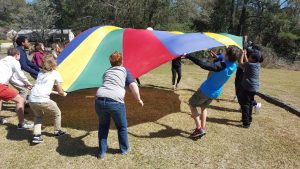 Furthermore, individuals interested in assuming leadership roles at the camp should undergo a selection process involving applications and interviews to ensure suitability for the position. This ensures that counselors align with the principles of Positive Youth Development, which is integral to the camp’s mission.
Furthermore, individuals interested in assuming leadership roles at the camp should undergo a selection process involving applications and interviews to ensure suitability for the position. This ensures that counselors align with the principles of Positive Youth Development, which is integral to the camp’s mission.
Source: Kentucky 4-H Counselor Training Guide

by Rachel Pienta | May 8, 2023
4-H functions most effectively as a youth-adult partnership that fosters positive youth development. Youth-adult partnerships can take several forms. One form is a mentoring relationship between a caring adult volunteer and a 4-H youth.
Mentoring is a relationship-based process that occurs over time. The mentoring process can be formal or informal. This blog post will explore what it means to be a mentor and the importance of mentoring roles in youth development. The person being mentored may be referred to as a protégé or as a mentee. Mentoring is not a one-way relationship. The relationship can fulfill professional and socioemotional needs for both mentor and protégé (Inzer & Crawford, 2005).
Formal mentoring tends to occur within an organizational structure. A senior member of an organization or an adult may be assigned to serve in a mentoring role to a new member or to a youth. Informal mentoring relationships are voluntarily formed between two people who choose each other (Inzer & Crawford, 2005). A third, hybrid approach known as youth-initiated mentoring (YIM) is also an option as a model and may be optimal for building mentor relationships in 4-H programs (van Dam L. B., 2021).

Mentors play one or more of these five roles for mentees.
5 Roles of the Mentor
The following mentoring roles can be accomplished within a formal or informal mentor relationship:
- Goal Setter: Help identify and prioritize the goals of the person you are mentoring.
- Adviser: Provide advice and guidance, often based on life experience and organizational knowledge.
- Cheerleader: Encourage positive actions and celebrate success.
- Growth Cultivator: Suggest activities that will help the person grow.
- Role Model: Serve as a model of potential success and provide real-life examples of how to surmount obstacles.
Goal Setter: The mentor as goal setter helps the youth to identify potential goals to set. Mentors can also play an important role in teaching youth how to balance and prioritize goals. For example, Susy may want to win a blue ribbon at the livestock show. At the same time, Susy is also trying to maintain a 4.0-grade average and work part-time. Susy’s mentor can help her to set realistic goals that help her to develop time management skills.
Adviser: It can be helpful for youth to learn from the experiences of others. For example, Michael wants to become state 4-H president. He has connected with adult volunteer Cory, who was state president when he was a 4-H youth. Cory serves as a sounding board and often shares how he learned from mistakes and was able to build on his successes to achieve his leadership goal.
Cheerleader: The cheerleader role may seem simple but also the most important. Celebrating youth successes – whether large or small – can make a big difference in a child’s life. Marking success with recognition and encouragement helps to reinforce positive behavior and helps to build a foundation for continued achievement. For example, Anna has been working on her aim during archer
y club practice. She wants to compete in an upcoming match. You observe her stance and coach her to adjust her posture. Anna is now able to hit the center target three out of four times. You praise her improvement and celebrate the achievement with her, sharing an exuberant high five.
Growth Cultivator: 4-H professionals and volunteers often refer to growing leaders and “making the best better” – the growth cultivator does these things. As a growth cultivator, a mentor helps to point youth in the direction of the next and most appropriate challenge that will help foster positive development. For example, Nathan has prepared a strong project board display for the county fair. You suggest he use that project board to develop an illustrated talk for district showcase.
Role Model: Serving as a role model for youth may seem like a full-time job! However, the key part of being a role model is honesty. Role models do not have to be perfect, but modeling honesty and how to be accountable when mistakes are made are critical elements of being a good role model. For example, you are usually early to club activities, greeting everyone with a smile and a personal acknowledgment when they come through the door. On the way to a district council meeting, you encounter heavy traffic and run late. When you arrive, your club youth members are already there and a 4-H agent has started the meeting. At the break, you shrug off your poor mood and tell your youth, “I didn’t leave early enough to allow for rush hour traffic. That is on me. I appreciate how you were all here on time and were able to participate in the meeting before I arrived.”
3 Key Elements of Effective Mentoring
A robust, growing body of research on youth mentoring suggests that a hybrid model of targeted mentoring and relational bond mentoring may produce the best outcomes for youth development (Christensen, 2020). Targeted mentoring involves a relationship focusing on a specific outcome or behavior – such as academic or career mentoring. Relational bond mentoring focuses on developing rapport and may present a more holistic approach. 4-H is built on a developmental model that uses this hybrid approach. Youth-adult relationships may initially form to reach specific goals – such as completing a project. Over time, as the youth becomes more involved with the program, relational bonds may develop. Research by Raposa et al (2019) suggests that effective youth mentoring involves an “interconnected set of three processes (i.e., social-emotional, cognitive, and identity formation processes) through which the establishment of close, caring relationships with non-parental adults are expected to promote positive developmental trajectories” (Raposa, 2019). Effective youth mentoring is likely to incorporate all three of these elements: social-emotional, cognitive, and identity formation processes.
How Does Youth-Initiated Mentoring (YIM) Work?
4-H can have an important role in providing a structured, safe environment where youth choose and develop mentoring relationships. One way to establish these type of mentoring relationships is youth-initiated mentoring (YIM). YIM is a hybrid approach in which youths and their families are helped to identify and recruit caring adult mentors from within their existing social networks (van Dam L. R., 2021).
The 4-H youth-adult partnership model provides a structure for helping youth to identify, recruit, and maintain connections with caring adults (van Dam L. B., 2021). The key elements in YIM are youth agency and choice in establishing and maintaining relationships.
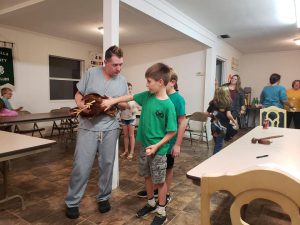
Club leader teaches poultry anatomy to youth.
Which Type of Mentor Role Fits?
The mentor role that best fits you and your mentee may incorporate one or more of the five mentor roles. It is likely that at some point during a long-term mentoring relationship a mentor will have played all of the five roles in supporting their mentor.
Become a Mentor with 4-H!
As a 4-H volunteer, you will opportunities to serve as a mentor to youth looking to form relationships with caring adults. To learn more about how to get involved, reach out to your local UF/IFAS County Extension office.
References:
- Christensen, K. H. (2020). Non-Specific versus Targeted Approaches to Youth Mentoring: A Follow-up Meta-analysis. Journal of Youth and Adolescence, 959–972.
- Inzer, L., & Crawford, C. (2005). A Review of Formal and Informal Mentoring: Processes, Problems, and Design. Journal of Leadership Education, 33-50.
- Raposa, E. R. (2019). The Effects of Youth Mentoring Programs: A Meta-analysis of Outcome Studies. Journal of Youth and Adolescence, 423–443.
- van Dam, L. B. (2021). Youth Initiated Mentoring: A Meta-analytic Study of a Hybrid Approach to Youth Mentoring. J Youth Adolescence, 219–230.
- van Dam, L. R. (2021). Youth-Initiated Mentoring as a Scalable Approach to Addressing Mental Health Problems During the COVID-19 Crisis. JAMA Psychiatry, 818.
by Rachel Pienta | Dec 9, 2022
What is a Youth-Adult Partnership?
“Youth-adult partnership” is a frequently used phrase among 4-H leaders, volunteers, and members. Volunteer club leaders are encouraged to foster youth-adult partnerships in the community club environment. What is a youth-adult partnership? How would a volunteer club leader begin to create this type of partnership? What is the adult role in the youth-adult partnership? Research shows that “caring, knowledgeable, and skilled adults can contribute to the success of young people as they grow and develop (Norman and Jordan, 2006). The first step in creating a youth-adult partnership is being the adult who wants to foster that environment in their 4-H club.
Positive Youth Development
4-H programs are built on a Positive Youth Development foundation. To further unpack what that phrase means, let’s begin with defining youth development. Norman and Jordan (2006) define “Youth development as an ongoing process through which young people attempt to meet their needs and to develop the competencies they perceive as necessary for survival and transition to adulthood.” When youth development is positive, this development has positive benefits and outcomes for the youth and the community. While youth development is a youth-focused process experienced by the youth, adults can and do play a role in this process. Adult leaders have the unique and special role of creating environments that provide opportunities to develop and grow in positive ways.
Zone of Proximal Development and the Role of the Adult Leader
Sociologist Lev Vygotsky studied how children learn and acquire skills. Through his research, he was able to determine that children can develop and learn to a certain point based on prior experience and knowledge. With the help of an adult teacher or leader, the child can learn more and acquire skills beyond what he or she might be able to accomplish without adult help. This learning theory is known as the “Zone of Proximal Development” (Vygostky, 1978). In 4-H, reaching the zone of proximal development where the youth-adult partnership empowers youth members to achieve is the goal we work to reach.
Working with Youth as Partners
The origin of today’s 4-H youth-adult partnership model is rooted in the work of sociologist William Lofquist. Lofquist (1989) developed the “Spectrum of Attitudes” to describe adult attitudes and approaches to working with youth. The Spectrum of Adult Attitudes places attitudes towards young people into three categories: Youth as objects; Youth as recipients; and Youth as partners (Williams, 2016). Lofquist noted that adult attitudes and the behaviors that result from these attitudes were not necessarily linear or clear cut. Youth needs may drive adult behaviors at different points in the learning and partnership process. In 4-H, adult leaders strive to transition youth from being knowledge recipients to being partners in learning and doing.
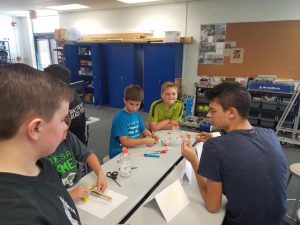
High school-age 4-H youth members plan and lead a 4-H robotics club.
Getting Started
Adults can foster and support successful youth-adult partnerships by creating and “providing environments for youth that are safe and nurturing and by expanding opportunities for experiences that will help young people develop skills they need for adulthood” (Norman and Jordan, 2006).
The idea of moving from an adult-led club to a club that operates as a youth-adult partnership may seem intimidating. Where do we start? How does it work? Volunteer club leaders may find that it takes a while to develop a community club that functions as a successful youth-adult partnership. Adults and youth may learn together as adults yield control and youth step into expanded leadership roles.
Tips for Establishing a Youth-Adult Partnership
In the club setting, creating space for shared decision-making can help build the youth-adult partnership. When adults make decisions “with” rather than “for” youth, space is created for youth voices to be heard, for youth decisions to be validated, and for youth to develop as leaders.
When youth make decisions about activities and projects, they begin to have ownership over the club experience and move toward acting as fully empowered partners with adult leaders.
How can adults create an environment that gives youth space to develop and grow as partners? Adult leaders can start building the youth-adult partnership by helping youth develop key skills to lead and run club meetings. Steps to reaching an effective youth-adult partnership include the following activities:
- Electing youth officers and providing officer training.
- Providing whole club training in parliamentary procedure with meeting procedure practice.
- Agenda planning that includes youth and adults.
- Adults joining youth-led meetings as participants.
- Setting ground rules so that everyone is heard and respected
Getting Started
For more information and resources on 4-H clubs and youth-adult partnerships, reach out to your local Extension office or 4-H agent.
We also have several tools and resources for office training, parliamentary procedure games, and agenda planning on our Northwest 4-H Volunteer Google Site. If you would like some hands-on training, make plans to attend our Northwest 4-H Volunteer Forum January 20-21 in Destin, Florida. Registration is available on 4HOnline
References
Lofquist, W. 1989. The technology of prevention workbook: A leadership development program. Tucson, AZ: Associates for Youth Development Publications.
Norman, M.N. and Jordan, J.C. 2006. Introducing 4-H youth development. EDIS 4HFFS101.2, one of a series of the 4-H Youth Development Department, UF/IFAS Extension. Original publication date February 2006. Reviewed July 2018. Visit the EDIS website at http://edis.ifas.ufl.edu.
Vygotsky, L. 1978. Interaction Between Learning and Development. In Gauvain & Cole (Eds.) Readings on the Development of Children. New York: Scientific American Books. pp. 34-40
Williams, C.D. 2016. What is authentic youth engagement? The Governor’s Office for Children. Maryland.gov. https://goc.maryland.gov/authentic-youth-engagement/.
Additional Resources
A 4-H Club Meeting
4-H Club Management
4-H Clubs that Youth Choose to Attend
Running a Smooth 4-H Business Meeting
by Heather Kent | Aug 29, 2022
 We are excited to announce registration for our 2023 Northwest Florida 4-H Volunteer Forum will open on October 15th! This post contains all the details about our event- who, what, when, where, and how. We hope you will plan to join us for an inspirational Friday night and Saturday as we connect with each other, learn together, and share our successes. Our theme is “Navigating the World of 4-H.” Together, we will learn about empowering youth, inspiring hope, and helping young people reach their full potential.
We are excited to announce registration for our 2023 Northwest Florida 4-H Volunteer Forum will open on October 15th! This post contains all the details about our event- who, what, when, where, and how. We hope you will plan to join us for an inspirational Friday night and Saturday as we connect with each other, learn together, and share our successes. Our theme is “Navigating the World of 4-H.” Together, we will learn about empowering youth, inspiring hope, and helping young people reach their full potential.
WHO
|
Our volunteer forum is for teen and adult volunteers leading and supporting 4-H clubs, groups, or programs in the northwest Extension district. |
WHAT
|
A weekend (Friday night and Saturday) event full of inspirational speakers, hands-on workshops, and opportunities to connect with and support other volunteers! Topics were identified based on last year’s forum participants’ feedback. Feel free to download the agenda and informational flyer. This post highlights some of the activities you won’t want to miss:
Friday night kicks off with our “Make and Take” Fair. Try out a wide variety of fun and exciting 4-H activities you can use with the clubs or groups you work with. Each time you visit a station, you can get your “passport” stamped! There will be selections to support all three 4-H pillar project areas- Healthy Living, STEM (science), and Citizenship/Leadership. During the Make and Take Fair, heavy hors d’oeuvres will be served and you will have the opportunity to test out the activities and take home samples and instructions to share with your youth, parents, and other volunteers.
After the make-and-take fair, we will have a fun icebreaker, and Dr. Stacey Ellison, our 4-H Program Leader, will speak and give a “state of 4-H” update and share strategies for inclusion and diversity. Volunteers are encouraged to network and mingle after her address.
Saturday morning will inspire! Gulf County 4-H Alumnus and best-selling author, Cedric Lennox, will share how his Florida 4-H experiences taught him about youth empowerment and how we can all be “Dealers of Hope.”
Following the keynote address, volunteers will be able to select from a variety of workshops:
- Road Map to Parliamentary Procedure
- Charting a Successful Sports Fishing Project
- Culinary Adventures with the 4-H Food Challenge
- Trek through Teambuilding
- Tour of 4-H Gardening Project
- Smooth Sailing with Cloverbuds
During lunch, connect with other volunteers who have similar interests as you to start building a community of practice for your 4-H clubs and groups! Dr. Jenny Jordan will share expert tips for Experiential Learning (or learn-by-doing).
After lunch, there will be more workshop selections for volunteers to choose from:
- Guide to 4-H Awards, Recognition, & Portfolios
- Voyage through the 4-H Clothing & Textiles Project
- Hike through the “Big Book of Cloverbuds”
- Survey of Service Learning
- Expeditions in Entomology
- A Mindfulness Pilgrimage
We will close our forum by sharing some exciting new resources- including a fundraising toolkit for 4-H volunteers (and more door prizes!). |
WHEN
|
January 20-21st. |
WHERE
|
Embassy Suites in Destin, Florida. No need to make a reservation- your registration is your hotel reservation confirmation! |
HOW
|
Registration opens in 4Holine on October 15th. The deadline to register is Friday, January 6th. Check with your local UF/IFAS Extension office to inquire about carpooling to and from the event. Dress for the weekend is casual (and comfortable)- we will be at the beach! |
HOW MUCH
|
Thanks to donations from the Florida 4-H Foundation and other partners, the registration fee for individuals sharing a suite with another volunteer is $100. The registration fee for a private suite is $150. The registration fee includes the room fee, a conference welcome bag, magnetic name tag, heavy hors d’oeuvres Friday night, breakfast and lunch on Saturday, plus workshop and make-and-take supplies. Many counties are offering scholarships, so please check with your local UF/IFAS 4-H Extension Agent about additional funding. |
by Julie Pigott Dillard | Aug 11, 2022
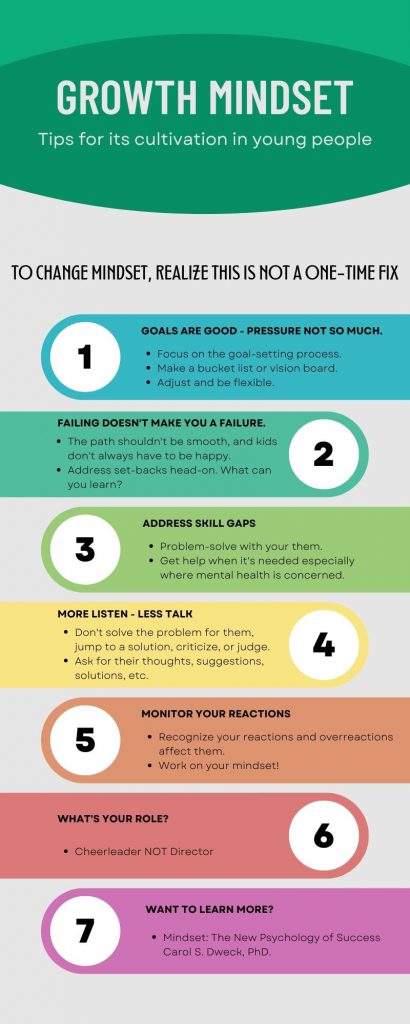 What is a Growth Mindset?
What is a Growth Mindset?
A vital skill we encourage in 4-H youth is to set goals and objectives to reach those goals. But what happens when they face a challenge that’s hard and scary or when they fail? With so much emphasis placed on achievement, success, and winning, is it possible for us to grow through challenges or failures? Absolutely! And 4-H provides opportunities to do just that. 4-H uses several theories, models, and frameworks to “do” positive youth development. One of the models we use is the 4-H Thriving Model (Arnold, 2018). This model describes what happens when 4-H programs provide the conditions for youth to explore their sparks in a safe environment and are supported by positive relationships with adults and other youth. One of the concepts related to the 4-H Thriving Model is the growth mindset. According to Carol Dweck (2006), our mindset can contribute to our success or our failure. You can think of the mindset as a spectrum. On one end is the fixed mindset and on the other end is the growth mindset.
First, let’s look at the opposite mindset – the fixed mindset and its tendencies:
- Avoids challenges
- Quits/gives up quickly or easily
- Negative self-image/self-talk
- Effort is pointless
- Avoids or ignores feedback or criticism
- Resentful of other’s successes
- Critical and judgmental of others
- Places blame elsewhere/makes excuses.
Conversely, the growth mindset and its tendencies might look like this:
- Embraces challenges
- Doesn’t give up easily/charges ahead
- Is realistic but compassionate to self
- Effort is part of the journey
- Learns from feedback and criticism
- Is inspired by and celebrates the successes of others
- Helpful and caring to others
- Looks for and believes in possibilities.
Why is a Growth Mindset Important?
Youth and adults who have a growth mindset are more motivated to learn, have better relationships, and are more resilient. As individuals, we all fall somewhere on the mindset spectrum. Sometimes we may have a fixed mindset in one area (such as public speaking) but have a growth mindset in another area (such as being a good writer). I’ve seen both mindsets played out many times in the livestock show arena, at shotgun matches, at the Chick Chain poultry show, and at the tailgate grilling contest. One of my senior 4-Hers came in second place in Chick Chain showmanship. Instead of being upset about not winning, his comment was,
“[4-Her] was really good. I learned a lot by watching him, so I know what to practice for next year.”
On the opposite side, I’ve overheard kids (and parents) exclaim something like ‘there’s no use in showing a pig because nobody can beat [4-Her].’ How could you encourage the growth mindset in that moment? By saying something like, “So what can you do differently? Besides winning, what else are you learning?”
As 4-H professionals and volunteers, we can support the development of a growth mindset to help youth thrive. Knowing where youth fall on the mindset spectrum can help you design and scaffold 4-H experiences to develop a growth mindset over time. For example, if we go back to the example of a youth who has a fixed mindset that they are bad at public speaking. As a caring adult, look for other ways that youth can develop confidence in communicating with others. Encourage them to start by using their spark (such as photography, art, or poetry) to communicate with others and share their project experiences. As they become more confident, encourage them to prepare exhibits, deliver team demonstrations, or even serve in a leadership position as an officer or committee chair.
Digging Deeper
Do you know where you are on the mindset spectrum? Before we can help youth thrive, we need to know whether we have a growth mindset or a fixed mindset. Take this assessment to determine where you fall on the mindset spectrum http://blog.mindsetworks.com/what-s-my-mindset.
To learn more about growth mindset, I highly recommend Mindset: The New Psychology of Success by Carol S. Dweck, PhD. I challenge you to implement these tips with your 4-Hers this year!
References:
Arnold, M. E. (2018). From context to outcomes: Adolescent thriving in 4-H Youth Development Programs. Journal of Human Science and Extension, 6(1), 141-160.
Dweck, C. S. (2006). Mindset: The new psychology of success. Random House.
 Dates: January 10-11, 2025
Dates: January 10-11, 2025








